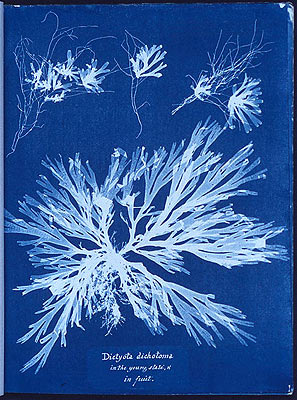The blueprint process is essentially the cyanotype process developed by the British astronomer and photographer Sir John Herschel in 1842.
Read about Sir John Herschel in the link below:
http://www.newworldencyclopedia.org/entry/John_Herschel
Read about Sir John Herschel in the link below:
http://www.newworldencyclopedia.org/entry/John_Herschel
Portrait of Sir John Herschel (1792 - 1871)
by his daughter Margaret Louisa Herschel (1834 - 1881)
A bit of background info:
The Cyanotype Process
The cyanotype process was one of the first non-silver technologies used to create photographic images. Originated in the 1840's, it was not utilized in mainstream photography and was adopted as a copying technique, becoming known by the term "blueprint", with its blue background reproductions of large architectural and mechanical drawings.
Variations of the original formula involve different ratios of the following chemicals:To begin the process, two solutions are prepared for the two-part sensitizing process. Material sensitized with the solution is then printed by ultraviolet light.
(1) Potassium ferricyanide and (2) Ferric ammonium citrate(green). Too much potassium ferricyanide in the solution will lower printing speed; too little may cause the blue color to bleed into the lighter areas. Basically equal volumes of the two solutions are used.
Below are several more commonly used cyanotype recipes. The chemical names are linked to prices, information, and online ordering. Use appropriate safety measures throughout the process.
Solutions may be stored for several months in amber glass bottles.


No comments:
Post a Comment